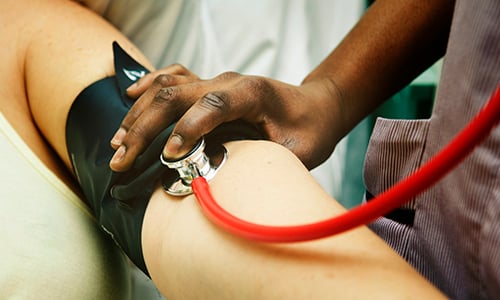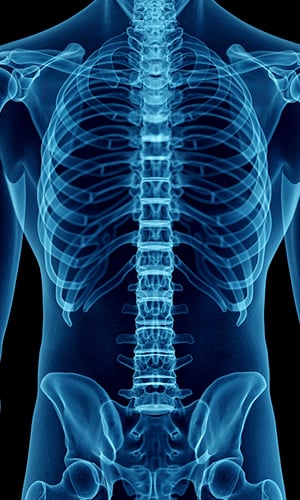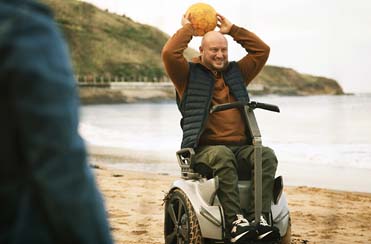If you are a caregiver to someone with a spinal cord injury, you should know about a serious medical condition called autonomic dysreflexia so you can help prevent and possibly resolve it.
If you’re the caregiver of somebody with a spinal cord injury, you should know about autonomic dysreflexia (AD), a serious and potentially life-threatening condition.
Your caregiver role is especially important because some of the common symptoms of autonomic dysreflexia may impair the mental capacity of the person under your care. These include a debilitating headache and a feeling of disorientation or confusion. Therefore, he or she may not be able to recognize or deal with what’s happening in their body, which can lead to a stroke, seizure, or cardiac arrest.
Understanding autonomic dysreflexia: the basics
Autonomic dysreflexia happens when the body’s autonomic nervous system is “confused” and overreacts to stimuli below the spinal cord injury level. Blood pressure spikes and heart rate slows, a lethal combination. Many causes can send the body into this dangerous spiral.
Not all people with spinal cord injuries are vulnerable to autonomic dysreflexia. If the spinal cord injury is T6 or above, the person under your care is at high risk. If the injury location is between T-6 and T-10, there is a moderate risk of AD. A spinal cord injury below T10 eliminates the risk.
Caregiver tips to help prevent autonomic dysreflexia
There are a wide variety of stimuli below the spinal cord injury level that can bring on autonomic dysreflexia. These triggers also vary in terms of the type of pain, discomfort, or stimulation. It can be something as minor as tight-fitting clothing or something major like a broken bone or a deep cut. A trigger can be a full bladder or it can be sexual activity.
As a caregiver, it’s vital to understand the typical causes. This information is helpful not only for the prevention of autonomic dysreflexia, but also in possibly resolving the condition without going to the ER (but always err on the side of caution).
Three areas frequently trigger autonomic dysreflexia, with bladder problems being the number one cause. You’ll find some caregiver tips for preventing AD in the following table.
|
Common AD Problem Area |
Caregiver Prevention Tips |
|
Bladder issues |
· Check several times a day that the catheter bag isn’t overfilled · Make sure catheter hoses are not kinked or blocked · Inspect the catheter for damage, loose connections, or a possible malfunction; replace or fix, if needed · If an intermittent catheter is being used, make sure to stick to a daily schedule and that the bladder is emptied fully each time · Look for signs of a urinary tract infection |
|
Bowel problems |
· Help address and resolve any constipation issues with the person under your care; consult a physician, if needed · If you supervise or assist with digital stimulation, make sure it is done gently and with enough lubricant · Check for hemorrhoids and help minimize or reduce them with ointments and cushions; arrange medical attention, if needed · Take notice of excessive gas, bloating, or flatulence; address with diet changes or consult with your medical team · Recognize the symptoms of a bowel infection —diarrhea, changes in stool appearance, rectal bleeding, vomiting; if you spot any of these signs, arrange for a doctor’s visit |
|
Skin or skin-related issues |
· Check for pressure sores (pressure ulcers); stay vigilant in avoiding pressure wound injuries by consistently making sure the person under your care changes body position frequently, keeps the skin clean, stays hydrated, and does pressure releases every 15-20 minutes; consult your medical team for more pressure injury prevention tips · Regularly look for red spots, blisters, scrapes, insect bites, or cuts · Be aware of any hard or sharp objects pressing against the skin · Make sure wheelchair cushions are placed properly and inflated fully |
Caregivers—when to seek medical help
Now that you know some of the potential “hot spots” and what you can do to prevent AD, that same knowledge helps resolve issues if this medical condition does arise suddenly. For instance, you can quickly act to unkink a catheter hose or change out an overfilled bag—two very common causes.
If you suspect the person under your care is experiencing autonomic dysreflexia, check their blood pressure every 5 minutes. (Caregivers should have access to a home blood pressure monitor and know how to use it.) If the injury is above T6, often a reading of 20-40 mm Hg above baseline may be a sign of AD. In adolescents, a reading of 15-20 mm Hg above baseline signals possible AD. In children, a reading of 15 mm Hg above baseline potentially indicates AD.
If the warning signs and symptoms of autonomic dysreflexia persist, you should treat it as a medical emergency and immediately go to your nearest ER.
References:









